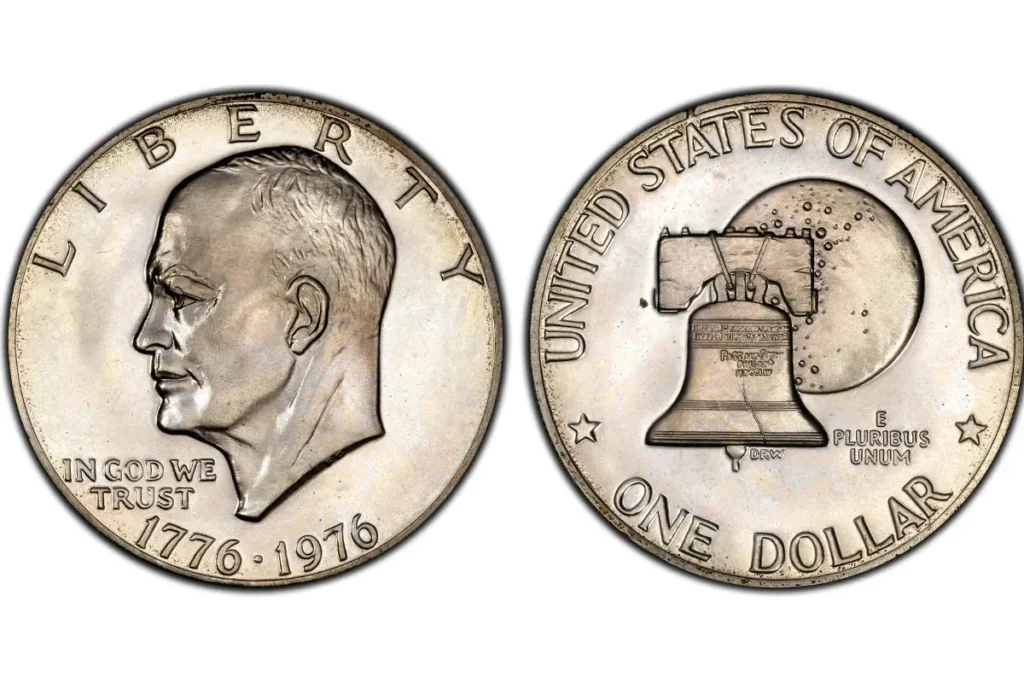The 1976 Bicentennial Quarter isn’t just a regular coin; it’s a collectible piece of history. While most are worth only 25 cents, a rare type of this coin has made waves for its jaw-dropping value of around $10 million. Let’s explore why this particular Bicentennial Quarter is so valuable, focusing on its history, unique minting errors, and special features.
Why Is This Bicentennial Quarter Worth So Much?

1. Rare Minting Error
A unique mistake in the minting process made this coin incredibly valuable. The most prized Bicentennial Quarter was accidentally struck on a 90% silver planchet (blank metal disc) intended for half-dollar coins. Since most Bicentennial Quarters are made of copper-nickel, this silver error is a rare find.
2. Nearly Perfect Condition
In addition to its unique composition, this coin’s near-perfect condition adds to its value. It has been graded 65 or higher by professional coin graders, which is extremely rare for coins that have circulated for decades.
3. Historical Significance
This coin was part of the U.S. Mint’s Bicentennial series, marking 200 years since America’s independence in 1776. The Bicentennial series holds sentimental value, making these quarters valuable to history enthusiasts and collectors alike.
Key Features of the $10 Million Bicentennial Quarter
Date and Design
- Date: Although these coins were minted in 1975 and 1976, all display the dates “1776–1976.”
- Design: The front side (obverse) features George Washington, while the back side (reverse) has a special design of a Colonial drummer, created by artist Jack L. Ahr, unique to the Bicentennial series.
Metal Composition
Most Bicentennial Quarters are made from a copper-nickel blend. However, the rare version was mistakenly struck on a 90% silver planchet, significantly increasing its value.
How to Tell if You Have a Rare Bicentennial Quarter

Curious if your Bicentennial Quarter might be valuable? Here are some tips:
Check for Minting Errors
Examine the coin’s metal. If it appears silver instead of the usual copper-nickel, it may be one of the rare silver errors.
Look at the Mint Mark
Mint marks indicate where a coin was produced. Check if there are errors in the mint mark or if it’s missing altogether. This could increase its worth.
Measure the Weight
A standard Bicentennial Quarter weighs around 5.67 grams, while a silver quarter would weigh slightly more, about 6.25 grams.
Inspect the Condition
Uncirculated or near-mint condition coins are significantly more valuable than those that show wear from use.
Table of Key Bicentennial Quarter Values
| Quarter Type | Year | Estimated Value | Key Features |
|---|---|---|---|
| Silver Error Bicentennial Quarter | 1976 | $10 million | Struck on a 90% silver planchet |
| Standard Bicentennial Quarter | 1976 | $0.25 – $2 | Copper-nickel, no significant errors |
| Silver Proof Bicentennial Quarter | 1976 | $5 – $20 | 40% silver, proof finish |
| Misprinted Bicentennial Quarter | 1976 | $500,000+ | Missing or unique mint mark errors |
The 1976 Bicentennial Quarter stands out as a unique piece of history and is a symbol of the nation’s 200th birthday. While most of these quarters are worth just 25 cents, a rare error in its production—along with
its pristine condition and historical significance—has led one version to skyrocket in value, reaching nearly $10 million. Whether you’re a collector or just fascinated by U.S. history, this coin is a remarkable reminder of the unexpected treasures hidden in everyday currency.
1. What is the Bicentennial Quarter made from?
Most Bicentennial Quarters are made of copper-nickel, but the rare $10 million version was mistakenly struck on a 90% silver planchet.
2. How can I tell if my Bicentennial Quarter is rare?
Check for a silver color, a missing or unique mint mark, and weigh the coin—silver versions weigh slightly more than regular ones.
3. Why is one Bicentennial Quarter worth $10 million?
This quarter is so valuable because it was struck on a silver planchet by mistake and remains in near-perfect condition.
4. Where can I get my Bicentennial Quarter graded?
You can send your coin to a professional grading service like PCGS (Professional Coin Grading Service) or NGC (Numismatic Guaranty Corporation).
5. Are all Bicentennial Quarters valuable?
No, most are worth their face value of 25 cents. Only rare versions, like the silver error quarter, are worth much more.















